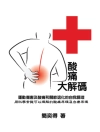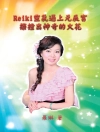Qigong is one of the most important aspects of traditional Chinese culture and medicine. In recent years, Qigong therapy has attracted more and more attention from modern medicine and science and is now widely applied in clinical settings to treat illness and promote well-being.
Chinese Medical Qigong is the first English translation of the only official textbook of medical Qigong, now in its third edition, used in colleges and universities of traditional Chinese medicine in China. Correlating the traditional therapies of Qigong with the most recent outcomes of modern scientific research, it is the authoritative introduction to the knowledge system and content of Qigong study.
This textbook will be an essential tool for medical students and healthcare professionals working in complementary and alternative therapies as well as for all those seeking a better understanding of the beneficial medical applications of Qigong.
Inhaltsverzeichnis
Foreword by Marc Micozzi, M.D., Ph.D. Introduction to the English Edition. Editorial and Translation Boards. Glossary of Chinese Terms. General Introduction: Essential concepts of Qigong Study in Chinese Medicine (QSCM); Academic system of Qigong Study in Chinese Medicine; Subjects related to Qigong Study in Chinese Medicine; Current tasks and challenges of Qigong Study in Chinese Medicine; How to learn QSCM. PART I FUNDAMENTAL THEORIES. Chapter 1 A Brief History of Qigong Development: 1.1 Developmental history of ancient Qigong from remote antiquity to the Qing Dynasty. 1.2 A history of modern and contemporary Qigong. 1.3 A brief introduction to major Qigong traditions/schools. 1.4 Qigong development in other countries. Chapter 2 Classic Qigong Theories: 2.1 Theories of Medical Qigong. 2.2 Theories of Daoist, Buddhist, Confucian, and Martial Arts Qigong. Chapter 3 Modern Research on Qigong: 3.1 Summary of modern research on Qigong. 3.2 Physiological effects of Qigong. 3.3 Psychological effects of Qigong. 3.4 Biochemical and immunological effects of Qigong. 3.5 Physical effects of Qigong. PART II PRACTICAL METHODS AND SKILLS. Chapter 4 Basic Operations of Qigong Practice: 4.1 Adjustment of body posture. 4.2 Adjustment of breathing. 4.3djustment of mind. 4.4 Integrating the three adjustments into Oneness. Chapter 5 Introduction to Qigong Forms and Methods: 5.1 Classification of Qigong forms. 5.2 Guidelines and precautions for practice. 5.3 Possible reactions to Qigong practice. 5.4 Possible deviations and corrections. Chapter 6 Selected Qigong Forms: 6.1 Liu Zi Jue (Six Syllables Formula or Six Healing Sounds Qigong). 6.2 Ba Duan Jin (Eight Pieces of Brocade). 6.3 Yi Jin Jing (Tendon Changing Classic). 6.4 Wu Qin Xi (Five Animal Play). 6.5 Zhan Zhuang (Post Standing Qigong, or Standing Meditation]. 6.6 Bao Jian Gong (Health Preserving Qigong). 6.7 Dao Jia Yang Sheng Chang Shou Shu (Daoist Arts of Nurturing Life and Attaining Longevity). 6.8 Fang Song Gong (Relaxation Qigong). 6.9 Nei Yang Gong (Inner Nourishing Qigong). 6.10 Qiang Zhuang Gong (Roborant Qigong). 6.11 Wu Xing Zhang (Five-Element Palm). 6.12 Zhen Qi Yun Xing Fa (True Qi Circulation Method). 6.13 Xin Qi Gong Liao Fa (New Qigong Therapy). PART III CLINICAL APPLICATIONS. Chapter 7 General Introduction to Qigong Therapy: 7.1 Characteristics and indications of Qigong therapy. 7.2 Principle of administering treatment by Syndrome Differentiation in Qigong therapy. 7.3 Procedures and clinical routine in Qigong therapy. Chapter 8 Examples of Clinical Application: 8.1 Pulmonary Tuberculosis. 8.2 Hypertension. 8.3 Coronary Artery disease. 8.4 Peptic Ulcer. 8.5 Chronic Gastritis. 8.6 Chronic liver diseases. 8.7 Chronic Nephritis. 8.8 Diabetes Mellitus. 8.9 Obesity. 8.10 Menopause Syndrome. 8.11 Impotence. 8.12 Chronic Fatigue Syndrome. 8.13 Depression. 8.14 Insomnia. 8.15 Tumors and Cancer. 8.16 Lower Back Pain and Leg pain. 8.17 Cervical Spondylosis. 8.18 Myopia. 8.19 Glaucoma. APPENDICES: CLASSICAL QIGONG LITERATURE. Appendix 1 Summary of Ancient Qigong literature: 1.i Qigong literature in medical works. 1.ii Qigong literature in ancient works of Daoist philosophy.1.iii Qigong literature in ancient Confucian works. 1.iv Qigong literature in ancient Buddhist works. 1.v Qigong literature in ancient Martial-arts works. Appendix 2 Ancient Literature in Medical Qigong: 2.i Excerpts from the Yellow Emperor’s Internal Classic. 2.ii Excerpts from the Records concerning cultivating mind and prolonging life. 2.iii Excerpts from the General Treatise on the Etiology and Symptomology of Diseases. 2.iv Excerpts from the Essential Golden Prescriptions for Emergencies. 2.v Excerpts from the General Collection for Holy Benevolence. 2.vi Excerpts from the Essentials of Attaining Longevity. 2.vii Excerpts from the Eight Essays for Cherishing Life. 2.viii Excerpts from the Incisive Light on the Source and Origin of Miscellaneous Diseases. Appendix 3 Ancient Qigong Literature of Other Schools: 3.i Excerpts from the Dao De Jing. 3.ii Excerpts from the Concordance of the Three According to the Classic of Changes. 3.iii Excerpts from the Yellow Yard Canon. 3.iv Excerpts from the Bao Pu Zi. 3.v Excerpts from the Awakening to the Truth. 3.vi Excerpts from the Primary Shmatha and Vipasyana. 3.vii Excerpts from the Classic of Wisdom paramita thoughts (the Heart Sutra). 3.viii Excerpts from the Classic of Great Palm Yoga. 3.ix Excerpts from the Great Learning. 3.x Excerpts from the Mencius. 3.xi Excerpts from the Realize and Practice. 3.xii Excerpts from the Muscle/Tendon Changing and Marrow Cleansing Classic. 3.xiii Excerpts from the Ten Main Points of Taiji Quan Arts. Bibliography of Classic Chinese Qigong Works. A Brief Chronology of the Dynasties in the History of China. Subject Index. Author Index.
Über den Autor
Tianjun Liu, O.M.D., is Director of the Qigong research laboratory at Beijing University of Chinese Medicine where he has taught Qigong for more than twenty years. He is also secretary general of the National Qigong Education and Study Association, secretary general of China Academic Society of Medical Qigong, and the first government approved academic mentor for Ph.D. candidates in the field of medical Qigong in China. For the past decade, Dr. Liu has been Editor in Chief of Qigong Study in Chinese Medicine, the only official Qigong textbook used in universities and colleges of traditional Chinese medicine in China.












